They like to crawl into crevices in the house and can even sting people. We show how to quickly get rid of the annoying assassin bugs.
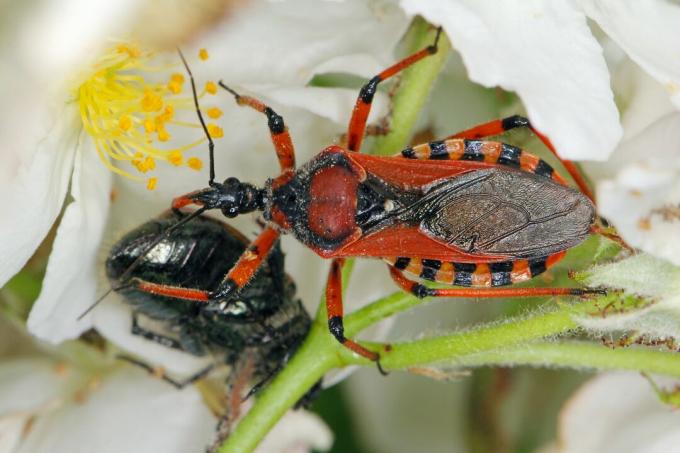
The family of assassin bugs is very large and different species of assassin bugs can look quite different. Here you can find out what these little insects and vampires are all about and why the useful assassin bugs are actually not assassin bugs at all.
contents
- Assassin bugs: origin and profile
-
Assassin bug species native to Germany
- Types of assassin bugs: the faecal bug (Reduvius personatus)
- Assassin bug species: The mosquito bug (Empicoris culiciformis)
- Assassin bug species: The imp (Phymata crassipes)
- Assassin bug species: The ringed assassin bug (Rhynocoris annulatus)
- Assassin bug species: The red assassin bug (Rhynocoris iracundus)
- A useful assassin bug: Macrolophus pygmaeus
- detect assassin bugs
- Prevent assassin bugs
-
Fight and get rid of assassin bugs
- Fight predatory bugs chemically
- Fight assassin bugs biologically and with home remedies
The family of assassin bugs (Reduviidae) includes almost 7000 different species, but most of them are native to the tropical regions of the world - we in Central Europe are only dealing with about 20 different species.
Assassin bugs: origin and profile
Assassin bugs can range in size from 5 to 20 millimeters and can range in color from an inconspicuous shade of brown to a conspicuous red-black hue. In addition, a wide variety of patterns are possible with the assassin bugs.
One thing that assassin bugs have in common is their diet, as all species are predatory. Such a procedure is characterized by the fact that the bugs feed on other insects and suck them off - a useful characteristic for us in principle. The assassin bugs sting the insects and inject their saliva to paralyze their prey and then kill them in peace. However, if you harass assassin bugs, it is quite possible that you will get a bug bite. For example, you often get a sting when you put on clothes that hide a bug. Such stitches can hurt a bit, but fortunately you don't have to reckon with other consequences.
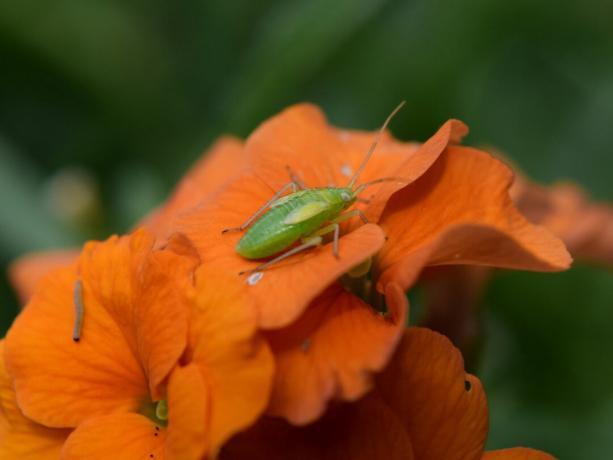
Unfortunately, there are even species that have taken a liking to birds and mammals and gorge themselves on their blood - much like a vampire. On the other hand, we humans are infested with bed bugs (Cimex lectularius), but they belong to a different family of bugs, namely the flat bugs (Cimicidae). Bed bugs feed on human or animal blood and leave itchy puncture marks on the skin. This means that they are also true vampires, as they feed on human blood, for example.
Assassin bug species native to Germany
In Germany and Central Europe there are about 20 species of assassin bugs - we briefly describe the most important of them below.
Species of assassin bugs: the faecal bug (Reduvius personatus)
This bug is also called the dust bug or masked tramp because the larvae of this species like to cover themselves with dust and sand to hide and make themselves invisible. This camouflage of the larvae makes it easier for them to ambush other insects and then suck them out. The adult bugs are dark in color and have a body length of 16 to 17 mm. Their strong proboscis, with which they can deliver extremely painful stings, is hidden under the flat body. If one of these bugs bites you, you'll likely get an itchy wheal that resembles a bee sting.
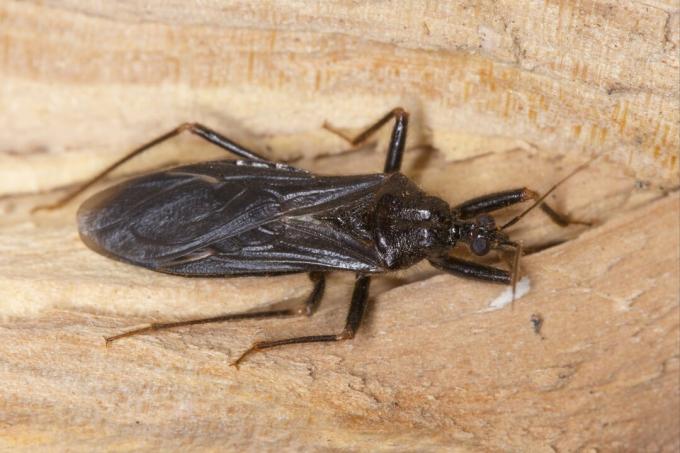
Species of assassin bugs: the mosquito bug (Empicoris culiciformis)
The mosquito bug is a very delicate bug that can reach a length of 4 to 5.2 mm. Her legs are ringed in black and white. The mosquito bug doesn't use its two front legs to walk, but to catch its prey - that's why these two feet are also called tentacles. The mosquito bug can be found throughout Europe, Asia, North America and northern Africa. They are mainly found in and around buildings, where they feed on insects such as book lice (Psocoptera) Go hunting.
Assassin bug species: The imp (Phymata crassipes)
The devil predatory bug is also called the praying mantis bug. This has a body length of 7.1 to 8.8 mm and a light brown color. The devil is found in Central Europe, Asia and North Africa. This species is particularly common in south-west Germany and in Austria up to an altitude of 1500 m.
Species of assassin bugs: The ringed assassin bug (Rhynocoris annulatus)
The ringed assassin bug is found in northern and central Europe and has also spread to Siberia. Their life requirements are rather simple, because this bug can deal well with dryness and moisture as well as low temperatures. These black bugs with red markings have a body length of 12 to 14.8 mm. They are mainly found on the ground and on trees.
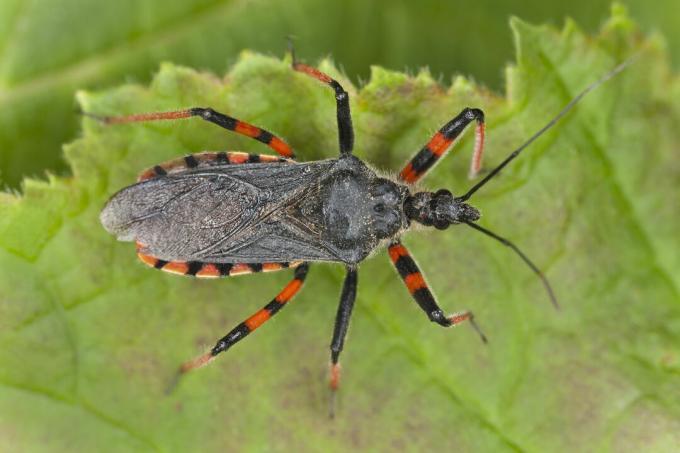
Assassin bug species: The red assassin bug (Rhynocoris iracundus)
The red assassin bug looks similar to the ringed assassin bug, but it is more red in color. Their body length is 13.8 to 17.6 mm and they are found on the flowers of numerous plants. The larvae of this species of bugs are mainly found on the ground, on various plants and on dead wood. The red assassin bug prefers warm, sunny and dry locations and feeds on insects.
A useful assassin bug: Macrolophus pygmaeus
There are not only harmful assassin bugs, but also those that we as beneficial can use. The bug Macrolophus pygmaeus is called assassin bug, but systematically belongs to the soft bugs (Miridae) and not to the assassin bugs. This bug is 3.1 to 3.9 mm long and widespread in Europe. Conveniently, you can use them against different types of White bow tie (Aleyrodidae), against aphids (Aphidoidea) and against thrips (Thysanoptera) insert. They are used to control these pests in greenhouses - the optimal conditions for these bugs are 22°C and humidity above 65%.
detect assassin bugs
The assassin bugs form a large group of insects that varies greatly in appearance. Basically, all bugs have six legs and a maximum body length of 19 millimeters. The smallest assassin bugs have a body size of only 3.5 millimeters and are very finely and delicately built, very similar to mosquitoes. Some species of assassin bugs have also developed the two front legs into catching legs. The coloration of assassin bugs can range from dark to light in color and can also be conspicuous. Many assassin bugs are spotted or otherwise patterned in colors such as red, yellow, or black. Assassin bugs have wings, and most of them can also fly. The feelers of these bugs always have a knee, so they are slightly bent. The proboscis also consist of three members and are bent downwards. When the assassin bugs stab their prey with this snout, they inject their saliva into it, paralyzing the prey in this way and then being able to kill and eat it. In Europe you don't have to worry if you get bitten by an assassin bug, because this only happens in exceptional cases and at most itchy wheals develop. However, assassin bugs in other parts of the world, such as South America, can transmit infectious diseases. For example, tropical assassin bugs transmit Chagas disease.
Prevent assassin bugs
Normally, you shouldn't have much of a problem with assassin bugs in your living quarters, as they feed on other insects that they're more likely to find in natural habitats. However, it can always happen that assassin bugs hide in attics or other quiet places. First and foremost, you should always try to keep insects such as assassin bugs away from your own four walls and prevent them from entering. Therefore, make sure that windows and doors are well sealed and do not provide entry routes for assassin bugs.
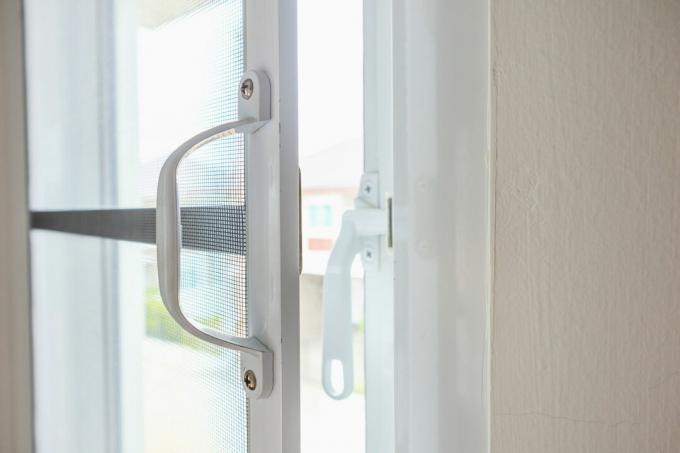
Also, do not leave the doors and windows open for unnecessarily long periods of time, because the assassin bugs can also get into your house through them. In order to still be able to ventilate your rooms unhindered, you should attach insect screens or nets to the windows and balcony doors. So you can ventilate without hesitation, without assassin bugs and other insects getting lost inside. Since bugs are attracted to light and heat, insect screens are particularly useful when airing in the evening and at night. If you don't own any such grilles and nets, you should at least always turn off the light in the room when airing the room in the evening.
Summary Preventing assassin bugs:
- Seal windows and doors and keep them closed
- Install insect screens
- Only ventilate in the evening with the light switched off
Fight and get rid of assassin bugs
Both chemical and biological control methods are available to you to combat assassin bugs. In the following you will find out which method really works against the pests.
Fight predatory bugs chemically
In order to effectively fight assassin bugs with chemical agents, you can use various insecticides that contain the active ingredients deltamethrin, pyrethrum or permethrin. These active ingredients are contained in many broadly effective insect sprays and are therefore very effective in controlling assassin bugs. These agents show their effect very quickly and sometimes also have a barrier effect. This means that not only will the bugs you catch get killed, but live bugs will also be stopped from entering your home.
notice: When using chemical insecticides, you should always pay attention to the instructions for use and the safety regulations. Always avoid contact with skin or eyes and avoid inhaling insecticides.
Fight assassin bugs biologically and with home remedies
One of the biological control agents is, of course, neem oil, which with its active ingredient azadirachtin can be used very well against a wide variety of insects. This oil comes from the tropical neem tree and has always been used in its countries of origin to combat insects. Here you can find out more about the topic neem oil and the application of this biological plant protection product.

Another method of biological control of assassin bugs is the use of soft soap or alcohol. A lye is prepared from the soft soap and the assassin bugs are sprayed with it. You can also mix alcohol with water and use it to fight assassin bugs.
Summary Fighting and getting rid of assassin bugs:
- While chemical control can be very effective, you should always be careful to avoid contact with the irritants
- When biologically combating assassin bugs, you should rely on neem oil or make a lye from soft soap or alcohol
Maybe the bedbugs in your house are stink bugs. You can find out how to recognize them and get rid of them in our special article.



